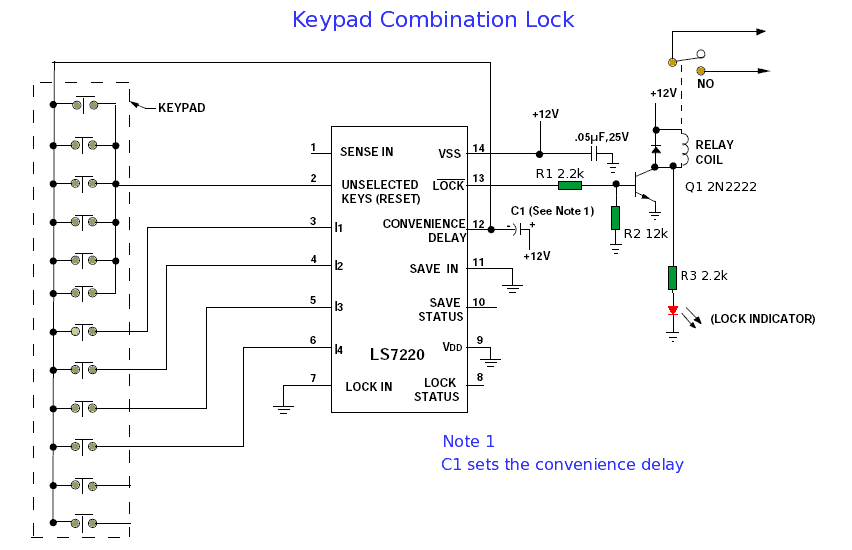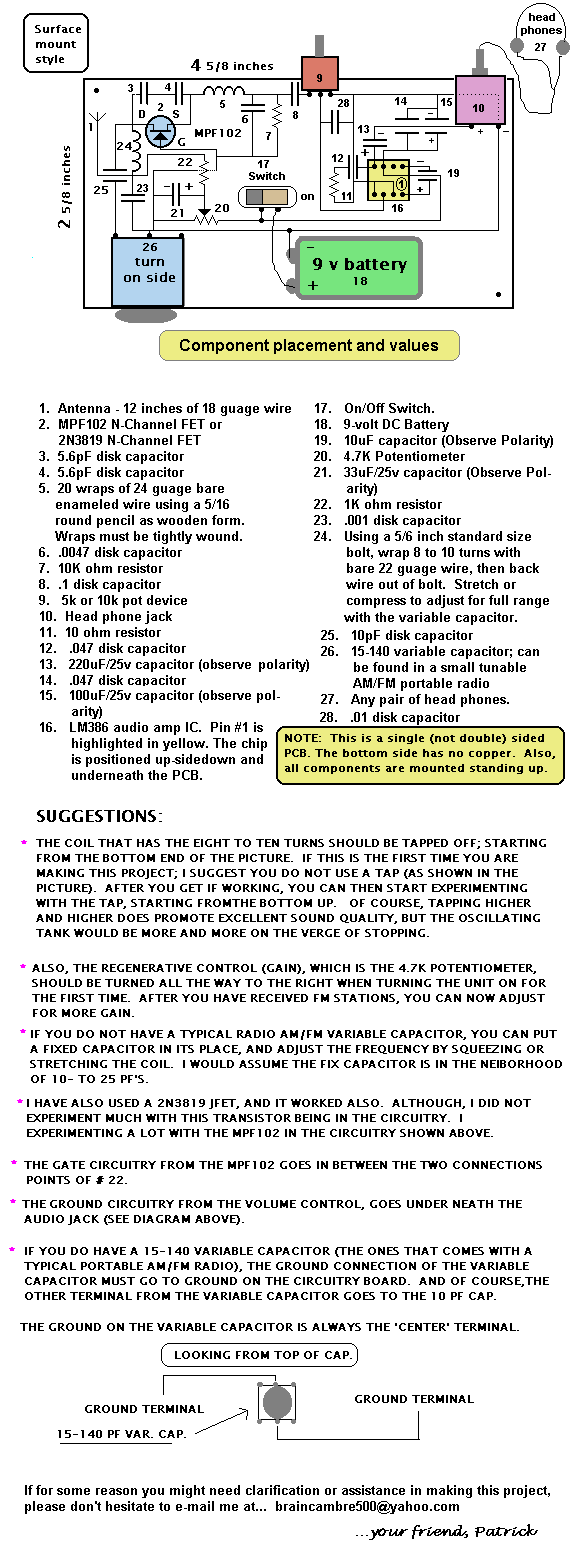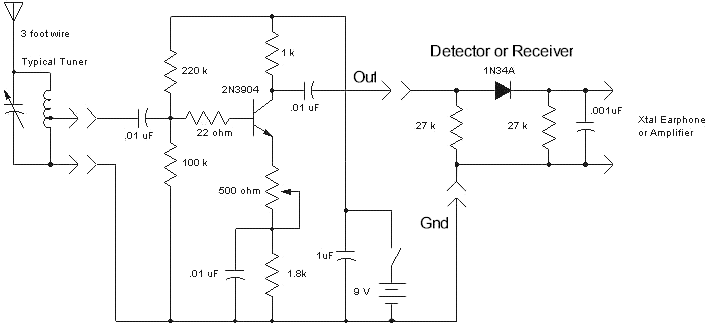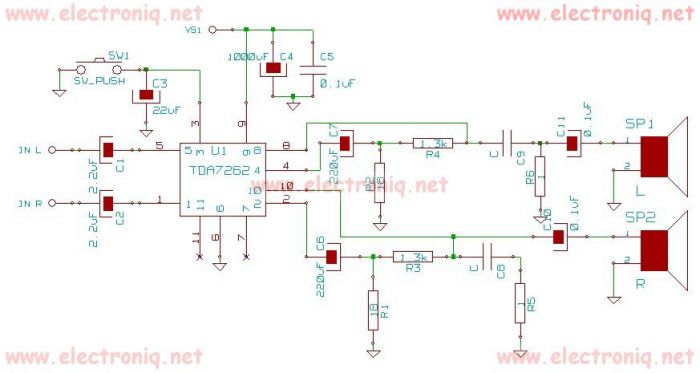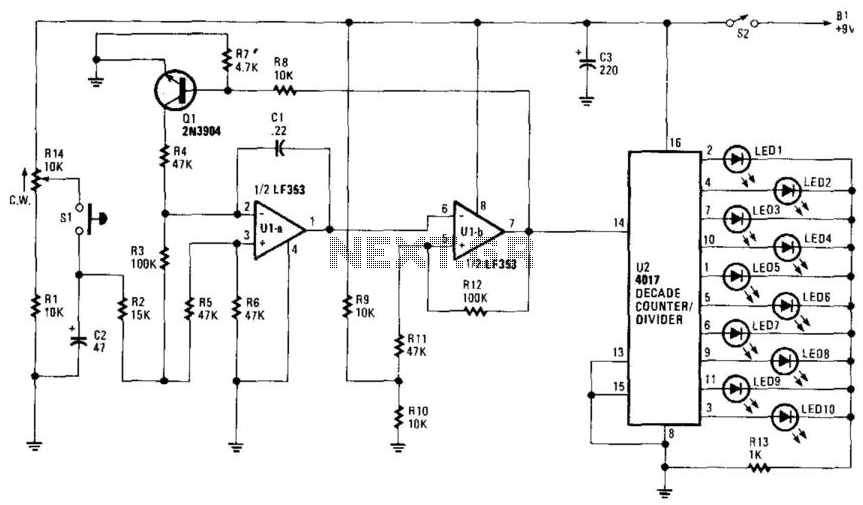
amplifier electronic circuits audio amp schematics 170w lm4651 lm4652
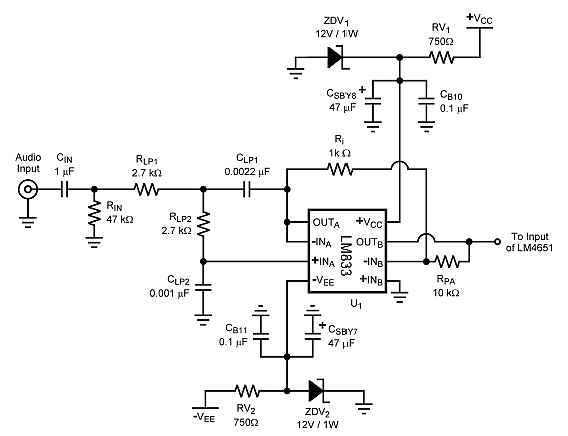
The ICs LM4651 and LM4652 are types of MOSFET integrated circuits and power amplifiers that include high-efficiency amplifiers, making them suitable for self-powered speakers, subwoofers, and high-quality car audio systems. The LM4651 is a fully integrated conventional pulse width modulation (PWM) driver that features undervoltage protection, short circuit protection, and overmodulation control. This circuit achieves a maximum efficiency of 85% at 125W in standby mode, with an attenuation of more than 100dB. For optimal performance, a suitable preamplifier is required. The gain of the preamplifier, when combined with the power stage, can be significantly reduced to enhance overall performance. Setting the gain to 10 V/V allows for lower gains in the Class D stage, resulting in a total system gain that is sufficiently high. An input filter is employed, which does not appear to improve total harmonic distortion (THD) performance but aids in maintaining a flat frequency response, as the Q output of the filter varies with light load impedance. The LM4652 is a fully integrated H-bridge MOSFET power IC housed in a TO220 package. The IC includes built-in temperature sensors that monitor the LM4651 die temperature and provide alerts when it exceeds a specified threshold.
The LM4651 and LM4652 integrated circuits are designed to provide high-performance amplification in audio applications. The LM4651 operates using pulse width modulation (PWM) to efficiently drive speakers, ensuring minimal power loss and high fidelity. Its built-in protection features, such as undervoltage, short circuit, and overmodulation protection, enhance reliability and safeguard the circuit against potential damage during operation. The maximum efficiency of 85% at 125W indicates that the circuit is optimized for power usage, making it ideal for battery-operated devices.
The integration of a preamplifier is crucial for achieving the desired audio quality. By adjusting the preamplifier gain to 10 V/V, the system can maintain a high overall gain while minimizing distortion in the Class D stage. This configuration allows for a balanced performance across various load conditions, ensuring that the audio output remains consistent and clear.
The use of an input filter is also significant, as it helps to stabilize the frequency response across different load impedances. While it may not directly enhance THD performance, the filter ensures that the audio signal remains flat, preventing unwanted coloration of the sound.
The LM4652's design as an H-bridge MOSFET power IC allows for versatile applications, providing the capability to drive loads in both directions, which is particularly useful in motor control and audio amplification. The TO220 package facilitates effective heat dissipation, which is essential for maintaining performance under high load conditions.
Overall, the LM4651 and LM4652 represent advanced solutions for high-efficiency audio amplification, combining robust protection features, flexible gain settings, and effective thermal management to deliver superior audio performance in a variety of applications.IC LM4651 and LM4652 is a type of MOSFET ICs and power amplifiers include high-efficiency amplifier, suitable for self-powered speakers, a subwoofer and driver quality car. LM 4651 is a fully integrated conventional pulse width modulation (PWM) driver, contains undervoltage, short circuit, overmodulation.
The maximum efficiency of this circuit is85% at 125W in standby attenuation of more than 100dB. For best performance needed Preamplifier suitable. Pre amplifier gain with the addition of the power stage can be greatly reduced to improve performance. The gain should be set to 10 V / V allows for lower profits in the Class D stage with a total system gain is high enough to be a solution.
Input filter is used here does not seem improve THD performance but will help to maintain flat frequency response as the Q output of the filter changes with the light load impedance. LM 4652 is a fully integrated H-bridge MOSFET Power IC in a TO220 package. IC temperature sensors built in to remind LM4651 die when the temperature exceeds the threshold. 🔗 External reference
The LM4651 and LM4652 integrated circuits are designed to provide high-performance amplification in audio applications. The LM4651 operates using pulse width modulation (PWM) to efficiently drive speakers, ensuring minimal power loss and high fidelity. Its built-in protection features, such as undervoltage, short circuit, and overmodulation protection, enhance reliability and safeguard the circuit against potential damage during operation. The maximum efficiency of 85% at 125W indicates that the circuit is optimized for power usage, making it ideal for battery-operated devices.
The integration of a preamplifier is crucial for achieving the desired audio quality. By adjusting the preamplifier gain to 10 V/V, the system can maintain a high overall gain while minimizing distortion in the Class D stage. This configuration allows for a balanced performance across various load conditions, ensuring that the audio output remains consistent and clear.
The use of an input filter is also significant, as it helps to stabilize the frequency response across different load impedances. While it may not directly enhance THD performance, the filter ensures that the audio signal remains flat, preventing unwanted coloration of the sound.
The LM4652's design as an H-bridge MOSFET power IC allows for versatile applications, providing the capability to drive loads in both directions, which is particularly useful in motor control and audio amplification. The TO220 package facilitates effective heat dissipation, which is essential for maintaining performance under high load conditions.
Overall, the LM4651 and LM4652 represent advanced solutions for high-efficiency audio amplification, combining robust protection features, flexible gain settings, and effective thermal management to deliver superior audio performance in a variety of applications.IC LM4651 and LM4652 is a type of MOSFET ICs and power amplifiers include high-efficiency amplifier, suitable for self-powered speakers, a subwoofer and driver quality car. LM 4651 is a fully integrated conventional pulse width modulation (PWM) driver, contains undervoltage, short circuit, overmodulation.
The maximum efficiency of this circuit is85% at 125W in standby attenuation of more than 100dB. For best performance needed Preamplifier suitable. Pre amplifier gain with the addition of the power stage can be greatly reduced to improve performance. The gain should be set to 10 V / V allows for lower profits in the Class D stage with a total system gain is high enough to be a solution.
Input filter is used here does not seem improve THD performance but will help to maintain flat frequency response as the Q output of the filter changes with the light load impedance. LM 4652 is a fully integrated H-bridge MOSFET Power IC in a TO220 package. IC temperature sensors built in to remind LM4651 die when the temperature exceeds the threshold. 🔗 External reference
Warning: include(partials/cookie-banner.php): Failed to open stream: Permission denied in /var/www/html/nextgr/view-circuit.php on line 713
Warning: include(): Failed opening 'partials/cookie-banner.php' for inclusion (include_path='.:/usr/share/php') in /var/www/html/nextgr/view-circuit.php on line 713
